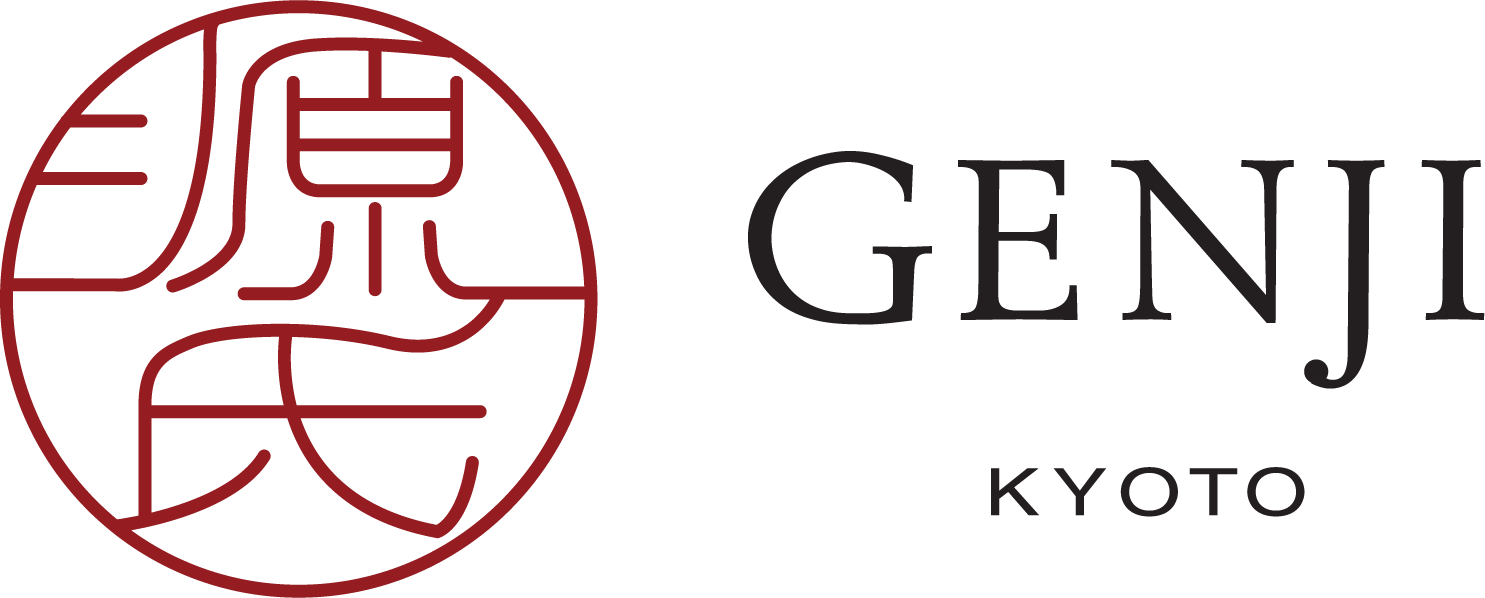You Guys Are Gonna Looove Japan!
by Brooke Taylor
My partner and I are Paris-based fashion designers in "experimental luxury", the branch of high fashion that pushes the boundaries of "normal" or "conventional". It is a movement that started in Japan, with Rei Kawakubo, Yohji Yamamoto and Issey Miyake the undisputed pioneers. These masters of cool have dominated the catwalks of Paris since the 1980s, and are still influencing fashion and design cultures around the world.
As admirers of both traditional and cutting edge Japanese design, we were always told: “You guys are gonna LOOOVE Japan!”
Experimental luxury - "Garden of Forking Path" dress by Aganovich duo Brooke Taylor and Nana Aganovich.
So imagine our excitement when finally a chance came for us to spend a week in Japan - not just as tourists but virtually pilgrims to the heart of the kimono world! It was a promotional tour and we were invited to meet silk weavers and kimono makers in Kyoto and Kyotango, a beautiful coastal city northwest of Kyoto. The organisers felt that with dwindling kimono demand, it might be fruitful to introduce silk's heritage and versatility to new wave European designers. It was hoped that we could incorporate the craft in our work and bring it to a wider audience in the West.
Kimono - a traditional craft originating in Heian Period a millennium ago.
Aganovich dress "Assassin". Bringing silk to a wider audience?
Heritage fabric, contemporary style
First stop: Tokyo. Night in Shibuya, morning walk Ueno Park, tour of Ginza where we visited one of our stockists. Buzzy, glitz, green, peaceful, surreal... Tokyo was every bit the city of contrasts we had imagined.
Tokyo - city of contrasts
Aganovich stockist Dover Street Ginza - pushing the boundaries of "normal".
Aganovich outfits made of vintage fabrics, in Dover Street Ginza.
Destination: Kyoto. How lucky for us that Kyoto became our base for the next 5 days. We plunged right in, got whisked away, were brought back, and were whisked away again in a whirlwind tour of factories and studios where craftsmen generously shared with us their silk dyeing, weaving, embroidering and printing techniques for making kimonos.
Aganovich duo with young weaver-cum-surfer in Kyotango.
Kimono fabric with samurai motif.
Vintage weaving machine in Kyotango.
Our visits incorporated Kyotango, Kanazawa and Osaka and were interspersed with the most breathtaking sightseeing and culinary experiences.
Just like you can't smell a scent you don’t have receptors for, or taste a flavor for which your tongue hasn’t developed the buds, I quickly found myself unable to catalogue our experiences.
Nana Aganovich after visit to shrine in southern Kanazawa.
Like many young European adolescents I too had gorged myself on the pre-packaged, easily digestible clichés of Japanese culture, the broad-stroke primary flavors of samurai, ninja, manga and sushi via James Clavell and DJ Krush.
The reality is not only more complex, but nuanced to a level that makes appreciating the references almost impossible (especially if you don’t speak the language)! Witness the decades-old confusion over geisha (called geiko in Kyoto). Many a transactional Western mind has still not grasped what it is that geishas do, despite (or perhaps because of) the numerous books and films dedicated to the subject.
Looking back on our rich experience meeting locals and learning about their crafts and aspirations, we have come to appreciate what Satsuko, our Paris-based pattern-cutter once told us, “The gift is far less important than the wrapping”.
I think that just encapsulates why there are such sublime experiences to be had in Japan, from the wonderful foods, ceramics and settings, to tea ceremonies and zen gardens. It cues you to the respect that Japanese people show towards things, and the heart that they put into every endeavour.
"Karesansui" zen garden.
Like the chef who wowed us with a crab feast, the embroiderer who unveiled their stunning mother-of-pearl ceremonial kimono, the weaver who showed us his surfboards, or the hostess at the 300-year Michelin-starred restaurant who explained “kintsugi” (the art of golden repair) to us when we wondered why they were using broken crockery. We were touched by the kindness and hospitality of our hosts. Yet at the same time we couldn’t help feeling we were barely brushing the surface.
Mother-of-pearl bridal kimono by Tamiya Raden, Kyotango's top maker of Nishijin textiles, accessories and interiors.
Kyoto was like the sliding shoji doors that we so adore - a series of constantly-shifting translucent panels that kept us at arms length, allowing for illumination while remaining opaque with cultural mystique.
By the end of our trip we realised the importance of having some kind of bridge. Someone who can guide us on that first step towards crossing the threshold. So we were delighted to find that our old friends were opening Genji Kyoto, a small hotel in a charming area that’s close to all the sights yet far from the madding crowds. What a perfect base for our next adventure!
As certified junkies who "absolutely loooove Japan", we can't wait to pull back a few more of those shoji screens and delve deeper into a truly extraordinary world!
Shoji screens in traditional house. Typically used as doors, windows or screens.
Mood board with swatches from the Kyoto trip.
Always ready to embark on the next journey!
